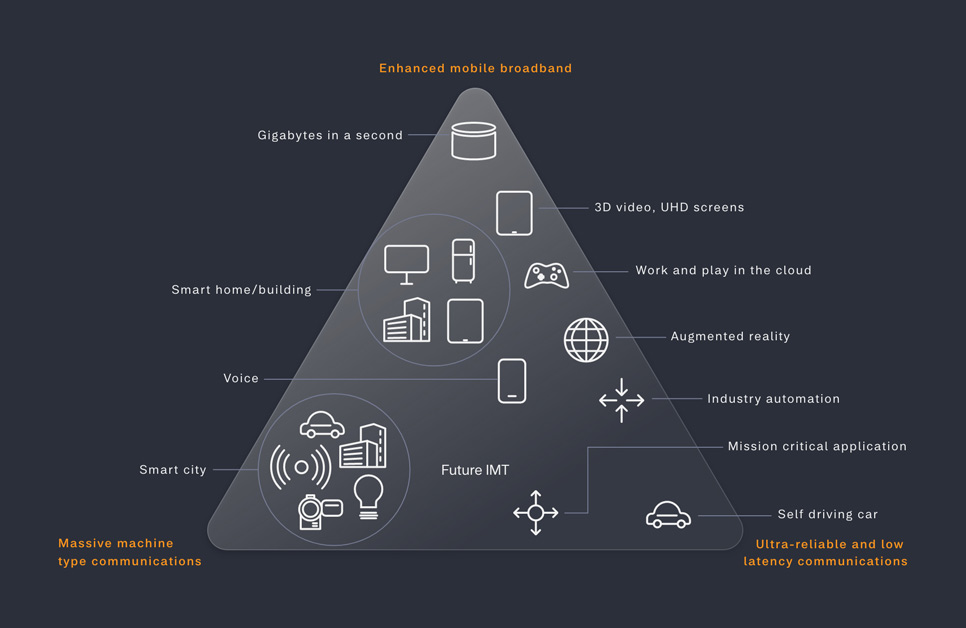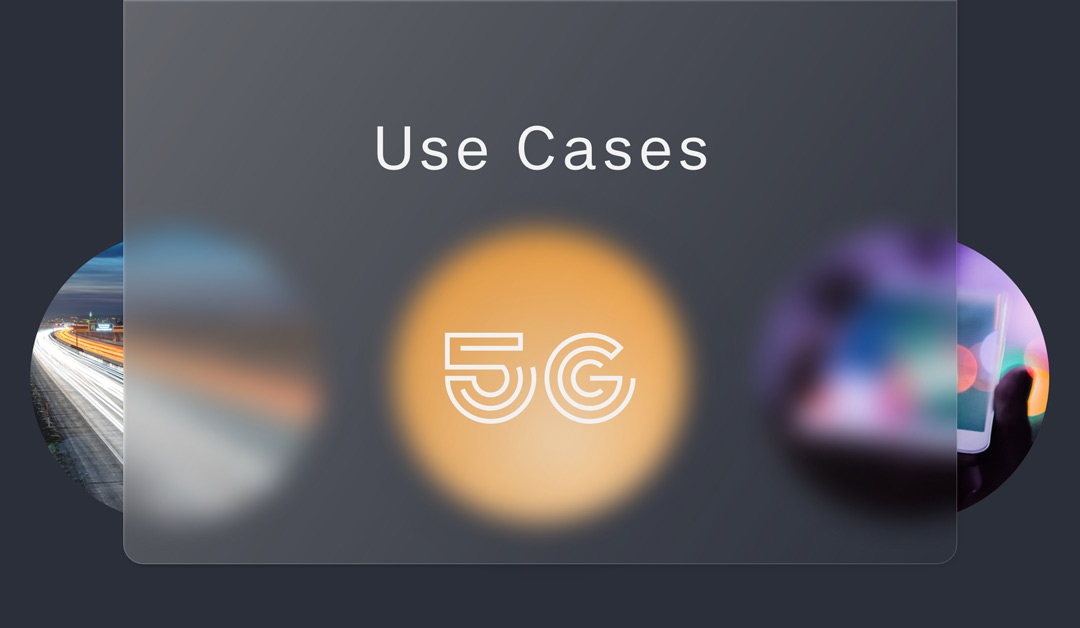Although each use case is different and has its own attributes, the majority of 5G use cases can be grouped around one of the following three categories: Enhanced Mobile Broadband (eMBB), Massive Machine-Type Communication (MTC), and Ultra-Reliable Low-Latency Communication (URLLC).
Sounds complex, but simply means there are the following 5G use cases:
5G Use Case 01
Large bandwidth, high data throughput (eMBB Enhanced Mobile Broadband)
The large bandwidth of 5G enables an unprecedented amount of data transfer and traffic. This is particularly exciting for complex visual solutions such as augmented and virtual reality. For example, 4K videos can be loaded on a smartphone in seconds instead of minutes, which enables many new real-time applications.
5G Use Case 02
Communication between devices (MTC Machine-Type Communication)
5G enables up to 100,000 connections per km2. This is particularly exciting for the automation of production processes, communication between devices and industrial applications. Applications are typically low-cost, low-power sensors and devices that provide good end-to-end coverage and transmit data back to the cloud.
5G Use Case 03
Intelligent, autonomous decisions in real time (URLLC Ultra-Reliable Low-Latency Communication)
The high availability and real-time, zero-latency communications offered by 5G enable signals & communications down to the nanosecond. This is particularly important in the areas of autonomous driving and healthcare, where many time-critical decisions are made. Therefore, intelligent and autonomous solutions are needed that can take over real-time decisions, guarantee robust coverage and reliable connectivity, and ensure security and sustainability.

Multiple 5G use cases with network slicing
5G can and will thus serve many customers with different needs and use cases. The key word for the optimal deployment of the 5G network is network slicing.
This technology enables a new type of virtual network architecture that provides resources tailored to specific 5G use cases.
Network slicing is the ability to create many virtual networks that are customized and optimized for the specific use case and traffic. In a public or private 5G network, this means that the network can be optimized for the user’s needs and support different use cases within the network.



